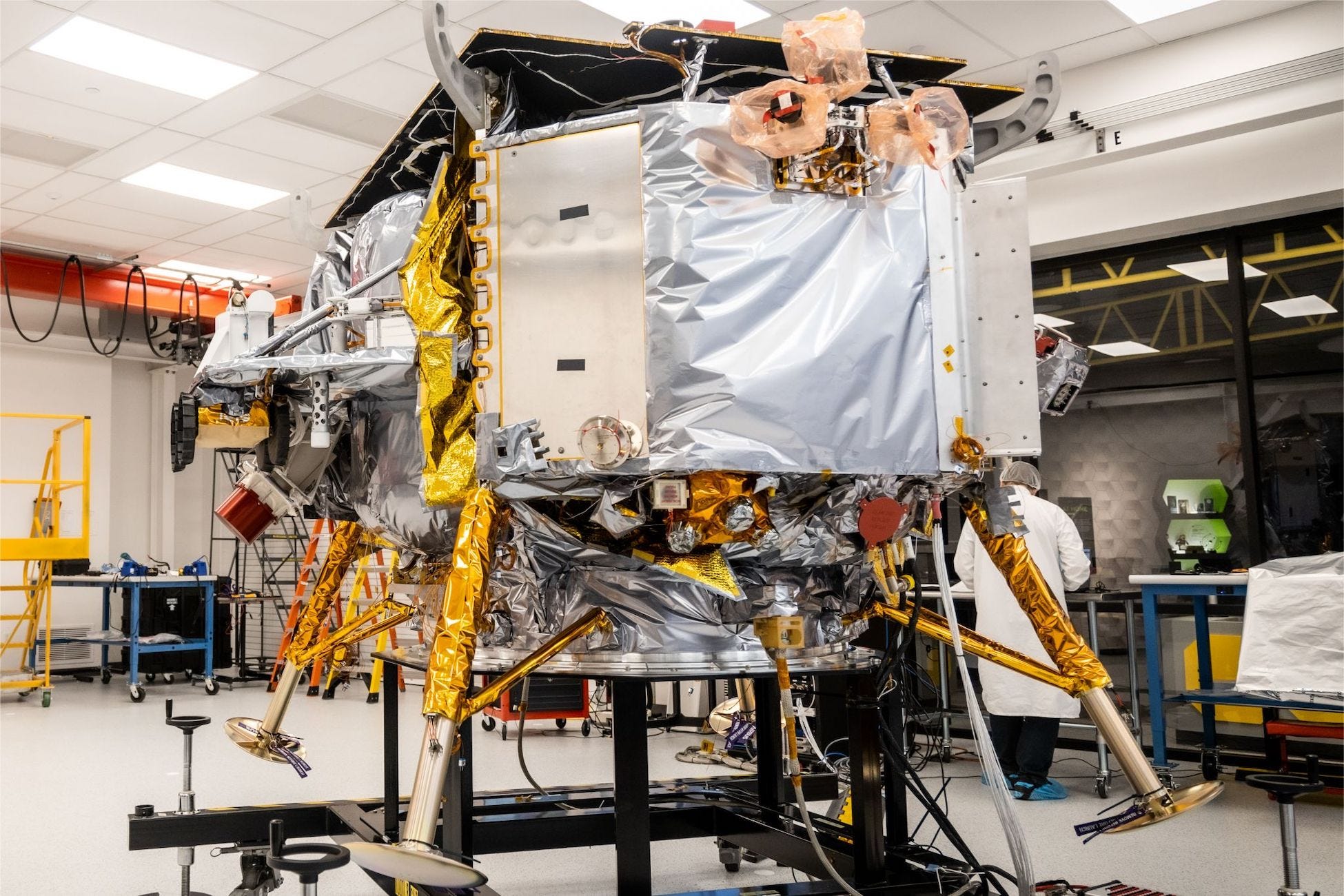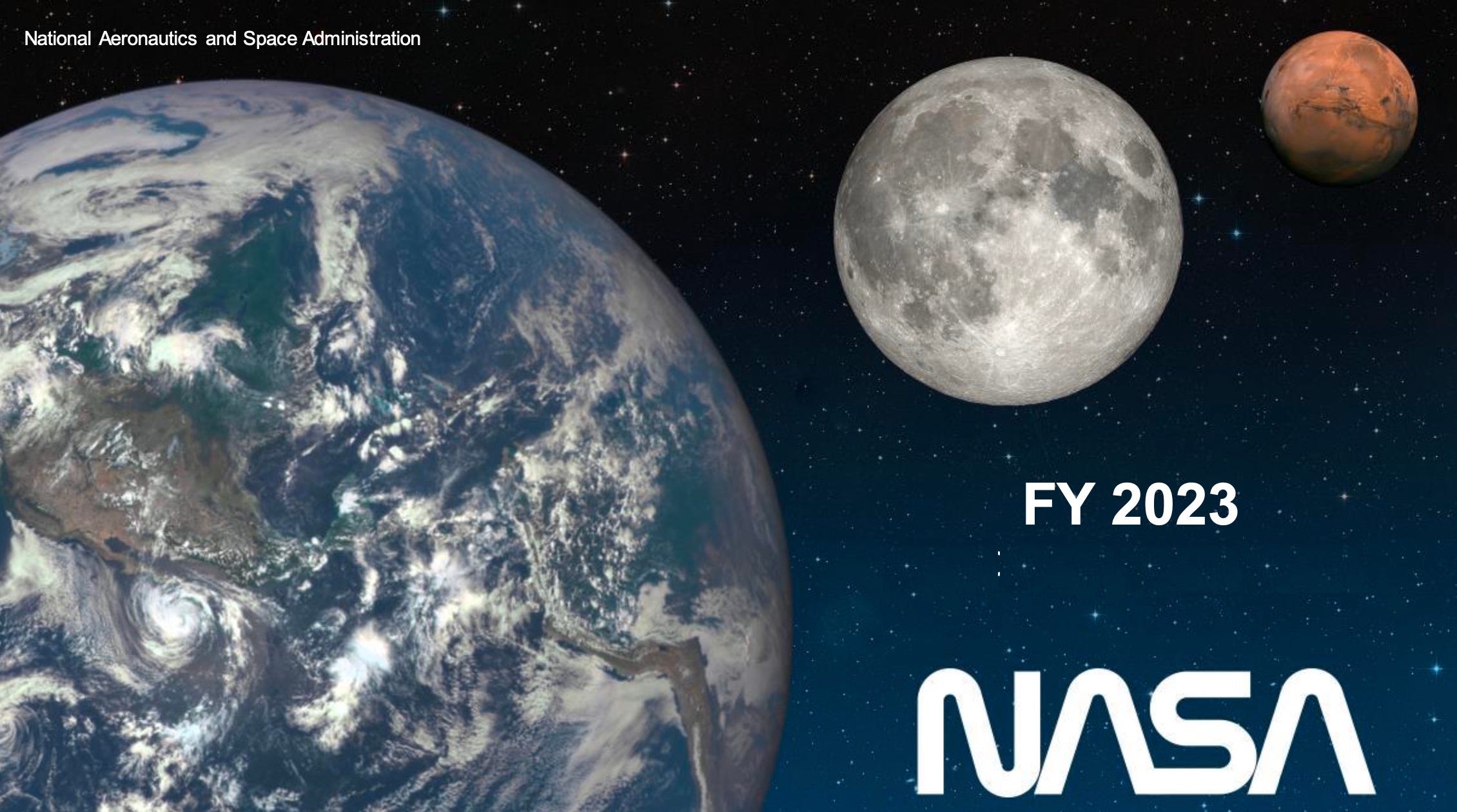Moon Monday #109: Seven lunar landing attempts this year, and NASA’s budget for Luna
Welcome back to Moon Monday! :D
2023 promises to treat us lunatics with seven robotic Moon landing attempts, with possibly three of them from the U.S., two from Japan, and one each from India and Russia. Below are the latest available updates on them all.

Moon landing mission updates
Japan
ispace Japan’s first lunar lander, launched on December 11, successfully completed its second orbital maneuver on January 2 to stay on its fuel-efficient trajectory to the Moon for an orbital capture event in April. The second maneuver required a much longer engine firing than the first one on December 15.
JAXA’s compact SLIM lander is targeting an April 2023 launch to demonstrate pinpoint lunar touchdown (~100-meter accuracy) with a low mass spacecraft. To that end, SLIM will land somewhere within the 300-meter wide Shioli crater’s ejecta, which lies amid rocky terrain. Orbital data suggests that studying the crater’s ejecta using SLIM’s near-infrared, multi-band spectroscopic camera could enhance our knowledge about the Moon’s mantle and its formation. (Thanks to Elizabeth Tasker for this news tip!)
The U.S.
Astrobotic’s first Moon lander, targeting a Q1 2023 launch as part of NASA’s CLPS program, is undergoing a series of space environmental tests to ensure its nominal functioning during all mission phases. Last month, the lander passed electromagnetic interference testing, which checks if the lander’s radiation emissions aren’t affecting its own functioning or that of its ride to space—the ULA Vulcan rocket. The test similarly checks for the rocket’s electromagnetic emissions not affecting the lander systems too.
While Intuitive Machines’ first CLPS mission, carrying six NASA payloads, is supposed to launch in Q1 2023 on a SpaceX Falcon 9 rocket, the company is yet to complete their spacecraft assembly. Moreover, NASA requested Intuitive Machines last year to change their landing site from near the equator to the Moon’s south pole, which necessitated more planning. Throw in an entire suite of space environmental tests to go through before heading to the launchpad and it becomes clear that Q1 is not feasible for the mission’s launch.
NASA completed testing a mass spectrometer late last year that will be onboard Intuitive Machines’ second CLPS Moon lander launching in H2 2023 on a Falcon 9. NASA’s PRIME-1 drill on the lander, while at the Moon’s south pole, will dig up soil up to a meter below the surface for the mass spectrometer to analyze it for water ice and other such volatiles.
- Relatedly, launching alongside the Intuitive Machines lander is NASA’s Lunar Trailblazer orbiter, which will give us unprecedented, high-resolution global maps of the amount, distribution, and state of water across the Moon. Last month, JPL delivered Trailblazer’s sensitive, wide-range infrared spectrometer to Lockheed Martin for integration with the spacecraft. Trailblazer’s second instrument—which will measure lunar surface temperatures to correctly calibrate the infrared spectrometer’s water detections—is expected to be delivered next in Q1 2023 by the University of Oxford.
- Also related: The Japanese company Dymon has moved the launch of its 0.5-kilogram, single-axis rover Yaoki from Astrobotic’s first lunar lander to Intuitive Machines’ second one.
Russia
Roscosmos is targeting the launch of its Luna 25 robotic Moon lander in July–August 2023. Luna 25’s instruments include an arm to sample material from 20 to 30 centimeters below the surface and then feed it to a laser spectrometer to determine elements and isotopes within. There’s also a neutron and a gamma ray spectrometer to identify the composition of the subsurface. The mission’s landing site, while not truly polar due to engineering constraints, is selected at about 70° South such that underground water ice could still be detected.
Relatedly, on November 25, 2022, Russia and China signed a formal agreement for bilateral cooperation in space activities through 2023–2027, which includes collaborating on the International Lunar Research Station, a long-term scientific base at the Moon’s south pole. Relatedly, Andrew Jones reports that China is expanding its Wenchang spaceport for a faster launch cadence and to accommodate crewed lunar launches by end of decade.
India
After ISRO’s Chandrayaan 2 lander unfortunately failed to touchdown on the Moon in 2019 during its final mission phase, the agency has been more serious and cautious about a landing re-attempt with Chandrayaan 3.
While the mission’s technological and scientific objectives haven’t changed, ISRO has made several upgrades to the Chandrayaan-2-like lander such as software improvements, strengthened legs, a couple of new sensors, and better power and communication systems to increase the likelihood of sticking the landing. The trouble is the lander now awaits a GSLV Mk III rocket being available for its ride to space, as two of those rockets were prioritized for OneWeb satellite launches. Since India can produce a Mk III roughly once every 8 months, it might well be August or even later before we see the lander blast off to our Moon.
NASA’s FY 2023 budget for Luna

On December 23, 2022, the U.S. Congress passed consolidated FY 2023 funding appropriations for all U.S. federal agencies. As part of it, NASA gets $25.4 billion, a roughly 5.8% budget increase over FY 2022’s $24 billion but less than the Presidential request of nearly $26 billion.

FY 2023 NASA Budget Document6.91MB ∙ PDF fileDownloadDownload
Given below are the Artemis and lunar-related highlights.
- The SLS rocket and the Orion spacecraft continue to be funded at roughly the same levels as NASA requested.
- NASA’s Lunar Discovery and Exploration (LDEP) program gets fully funded at the requested $486 million, particularly to ensure full funding for commercial CLPS lunar landings enabling surface science, which includes the VIPER rover mission. LDEP is the organizational unit chiefly integrating and coordinating Artemis science efforts across the agency as well as with NASA’s commercial and international partners. Their recent work includes formulating the Science Definition report as well as the Artemis science structure for the first crewed landing with Artemis III.
- NASA had requested $48 million to begin meticulous infrastructure planning for future Artemis missions leading to a baseline sustainable habitat. As part of that, the agency is getting $40 million for commercially developing lunar surface power systems, which primarily includes vertical solar arrays for the lunar poles and nuclear fission units.
- NASA gets the requested $1.49 billion for the development of crewed lunar landers by U.S. companies, compared to last fiscal year’s $1.2 billion. This is rather modest because the funding would be divided between NASA’s selection of SpaceX Lunar Starship for Artemis III, an alternative provider for the same mission, an upgraded Lunar Starship for Artemis IV, and the previously discussed “sustainable” lander proposals, one of which will bid against the upgraded Starship for all future crewed Artemis landings after Artemis V.
- NASA gets $281.4 million for the Mobile Launcher 2, an infrastructure element required to launch the SLS rocket’s Block 1B variant starting with the crewed Artemis IV mission targeting a 2028 launch. However, the amount is only half of what NASA asked for, with the U.S. Congress expecting the agency to fund the other half on their own. This is a (perplexing) response to the scathing June 2022 report by NASA’s Office of Inspector General (OIG) detailing the launcher’s poor progress and ballooning cost.
Many thanks to Epsilon3 for sponsoring this week’s Moon Monday.
Thanks also to Ryan Duffy of Payload Space, Daniel Verberne and Chris for supporting my independent writing.
Korean craft preps to snap the Moon
After its the third and last major orbital maneuver on December 26, South Korea’s KPLO spacecraft has circularized its lunar orbit to an altitude of about 100 kilometers. KPLO is now circling our Moon roughly once every two hours. The estimated fuel remaining on the orbiter is 93 kilograms, which is sufficient to fulfill its one-year primary mission of studying the Moon’s surface, the observations of which will begin in February. In the meanwhile, KPLO has already sent us amazing Earth & Moon pictures using its high-resolution black & white camera. Imagery from the same camera will be used to select a landing site for the country’s fully indigenous Moon lander, intended to be launched in 2032.


More Moon
- Eliana Sheriff has a great Behind the Scenes video on Firefly’s testing of its first Moon lander, launching in 2024 as part of NASA’s CLPS program.
- Check out the “Res Luna” project led by the Open Lunar Foundation (a Moon Monday sponsor), which gathered and analyzed various ways in which natural resources are governed on Earth and what from it we could apply at the Moon in the future as resource-utilizing missions mount.
- Walter Cunningham, who flew on Apollo 7 as the lunar module pilot, passed away on January 3.
- The first ever workshop on “Ices in the Solar System”, which starts today, includes discussing water ice on the Moon as well as some specific and proposed future missions to study its properties.
- Relive NASA’s Artemis I Moon Mission via some of its best pictures
